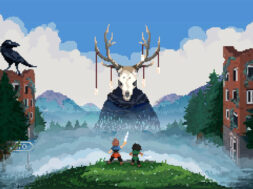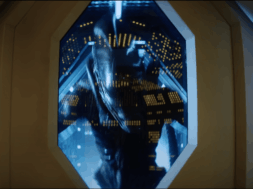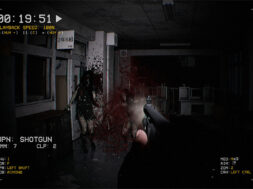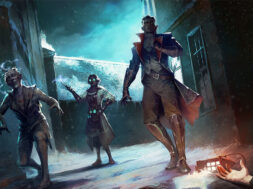[Best of 2018] How ‘SEPTEMBER 1999’ Presents Anxiety and Chills Through Mystery and Minimalism
Spoiler follow.
Indie video games have brought forth some fascinating experiences in recent years. Whether it’s the lovely tale of Florence, the heartbreak of What Remains Of Edith Finch, or the existentialism of The Beginner’s Guide, indie gaming has introduced millions of players to beautiful stories and unique gameplay outside the mainstream.
One of the newest gems in this art form is that of 98demake’s September 1999. The game takes place over five and a half minutes; besides walking around, the only other thing the player can do is zoom their vision in for a closer look at things. Visual perspective in September 1999 takes place through a video camera. The display provides the time and date, strings of static and fuzz going across the screen. This perspective enhances the creep factor of September 1999; as a first-person video game, the use of a camera brings a sense of intimacy to the surroundings as one moves and looks around.
Upon starting the game you’re facing a wall; turning around, you discover you’re in a bedroom. Looking around you’ll notice how it’s littered with wine bottles and beer cans; besides a lamp, a mattress, and other junk, the room is bleak. You can walk around the room, knocking into bottles and cans as you approach them, or you have the option to leave. Doing so brings you into a short hallway. Besides some wine bottles, you’ll notice a couple hung up pictures, a cross on the wall, and a bible on a nearby chair. Of the three doors at the end, all three are locked; the only window in the game happens to be boarded up.
As you walk back and forth there’s anticipation; things feel far too simple, and you may begin to think something is just bound to pop out. It’s common for many horror games to incorporate jump scares, catching us off guard in the quietest of moments. Then all of a sudden the display blacks out, cutting to fuzz and static, coming back to show that you’re standing in the middle of the hallway.
Minus the date and time on the screen, nothing seems to have changed. Even as you enter the bedroom, the setting still looks the same, minus a flickering lamp. That feeling of anticipation begins to intensify as you wonder what is going to happen. Then you hear footsteps somewhere in the distance. Awaiting for something to appear and shock you, the screen cuts out again.

This time, while standing in the hallway, all the lights are off. With a flashlight in hand, you notice red and blue lights flashing through the boarded up window. There’s chatter outside that sounds as if it could be the police; as they begin knocking on your door, your mind starts to question just why the hell would the police be here?
Then you find a wrapped up body in the bedroom. As it lies on the mattress, your mind may begin to race and wonder how it got there and who it is.
After the next blackout cut, you are standing in the hallway with the lights; the first big difference in this scene happens to be large smears of blood leading towards all the different doors. There’s also classical music playing somewhere in the distance, along with the sound of a man crying. As you head back towards the bedroom, you have no idea what’s behind the door. Upon entering, you see plastic wrap draped over the entire room. The mattress, now soaked in blood, lies against the wall. On the floor is a collection of grotesque, bloody body parts.
When the game shifts scenes for the final time, your view becomes fixed. It appears as though the camera has been left on the floor, giving a limited view of what’s happening. In the distance a chainsaw goes off, revving until the screen goes black.
On paper, these transitions may seem simple, but in actuality, they help to set up a profound horror atmosphere. The transitioning blackout cuts exude unease and anxiety given their sporadic presentation; unless you’ve played the game already, there’s no way to know when each shift will occur. Trying to search for clues as to what is going on and having no control of the shifting setting leaves one powerless regarding what’s to come. As a whole, September 1999 feels like an immersive trip diving into the unknown, making for a terrific horror gaming experience.
There is much debate around whether or not “walking simulators” are video games; I am part of the crowd that shouts that they are. Video games are evolving with technology, as well as our understanding of gaming. In my opinion, a digital space where one can interact or participate in is “playing”; the fact that September 1999 gives you room to move about an area, to explore and feel, makes it a video game. By no means is it a video game in a formalistic sense, but a game none of the less.
Part of September 1999’s appeal is embracing its atmosphere; since there aren’t any activities one can do outside of walking and looking, the player has more room to engage with the mystery. With all this space for imagination, the player can try to piece together their own story; what I found to be terrifying about this element, is the fact that we have no idea who the avatar we are controlling is.

Are we the one who brought this body here? Are we the one the cops are looking for? Are we the one who is revving that chainsaw at the end?
There’s no answer.
September 1999‘s limited space, control, context, and manipulated setting make for one of the best and uncomfortable gaming experiences in recent years. September 1999 is a game that embraces horror, placing the player in a state of unknown and with no control.
In a world dominated by big industry titles, it’s tough to confirm how well one could market a game like September 1999. However, I believe there is much to learn from it. Not only is it a reminder of the wonderful art that comes from indie gaming, but it is an example of how video games can present severe unease, anxiety, and horror.









